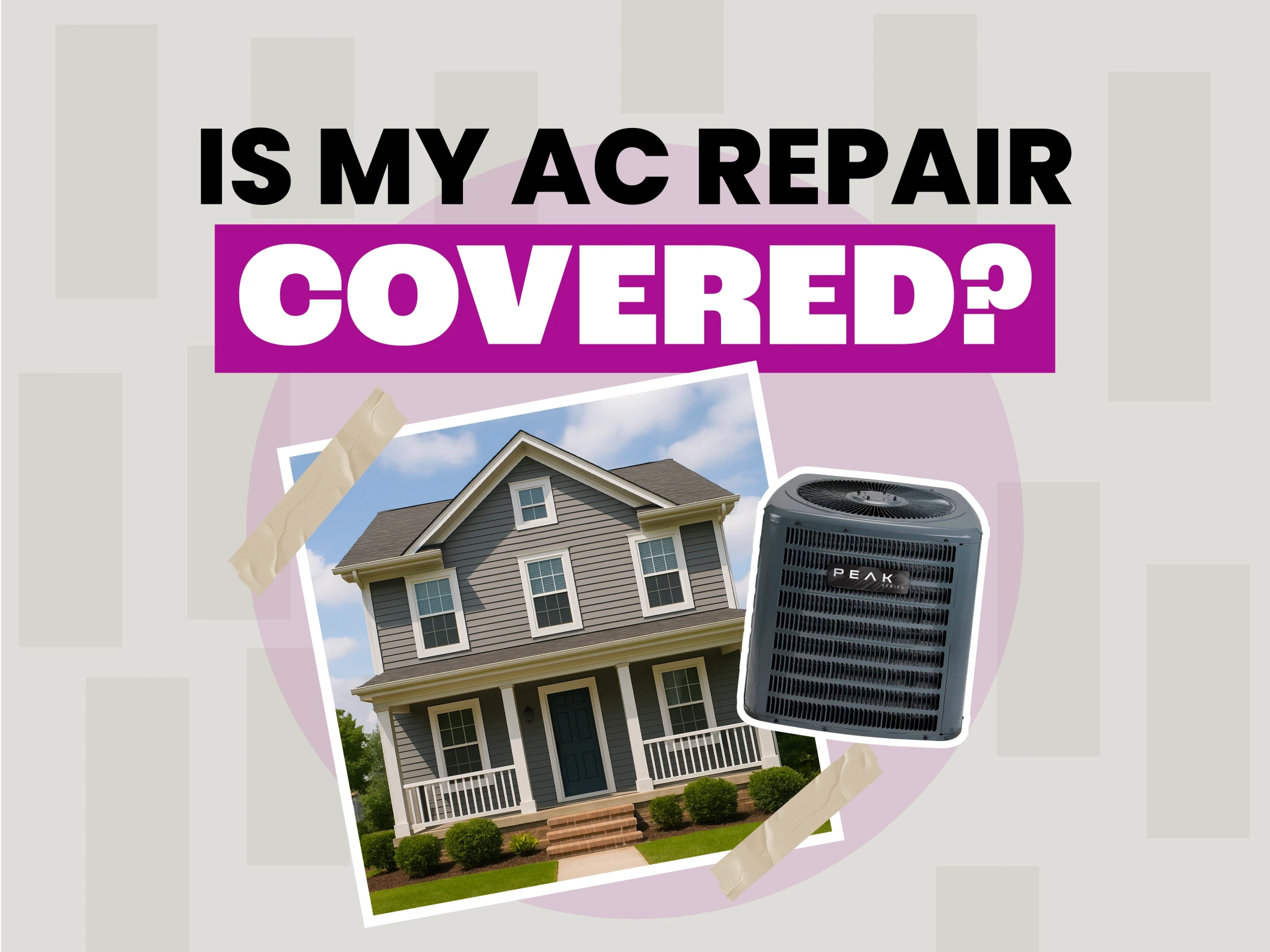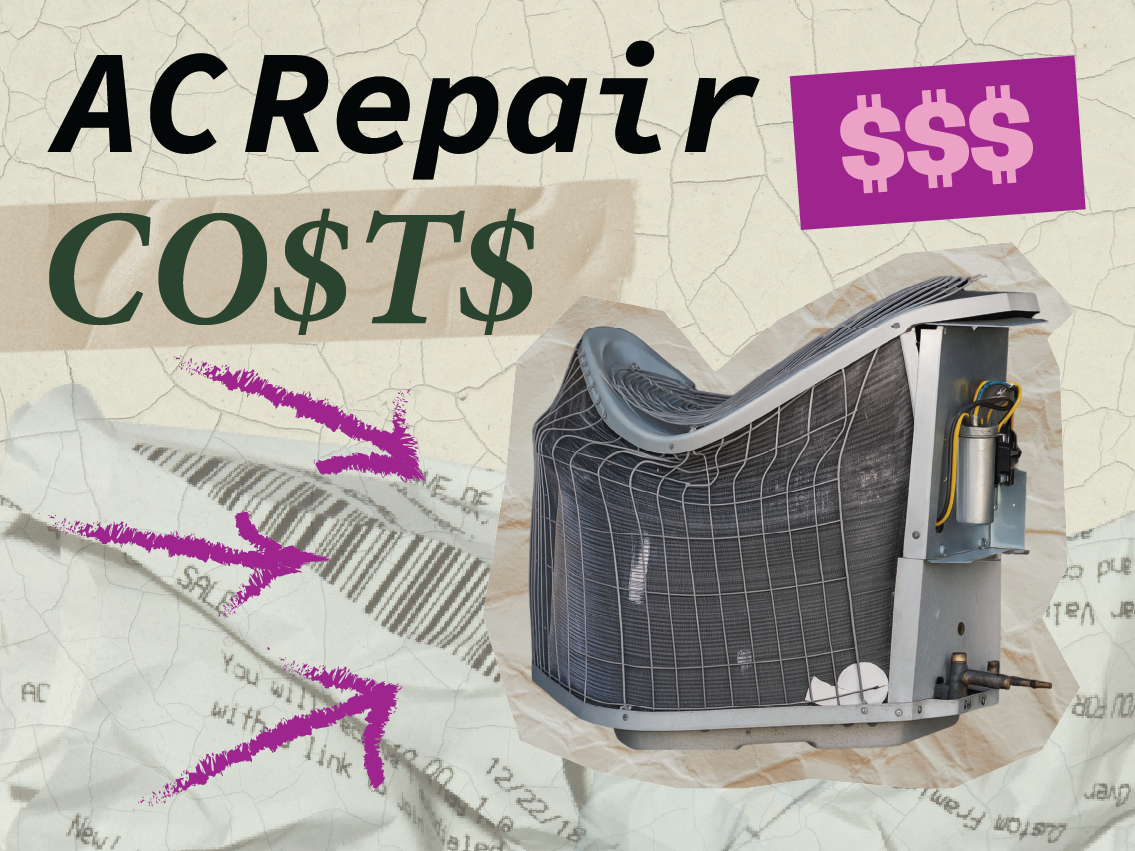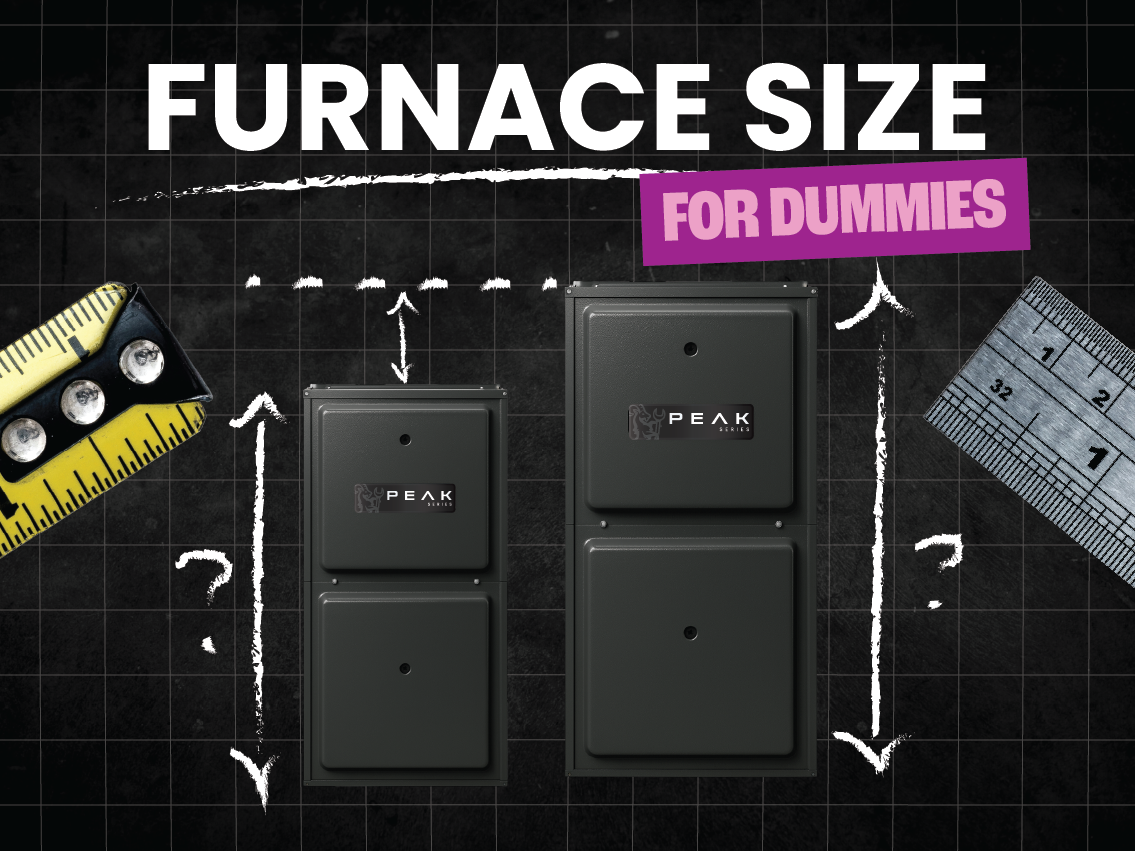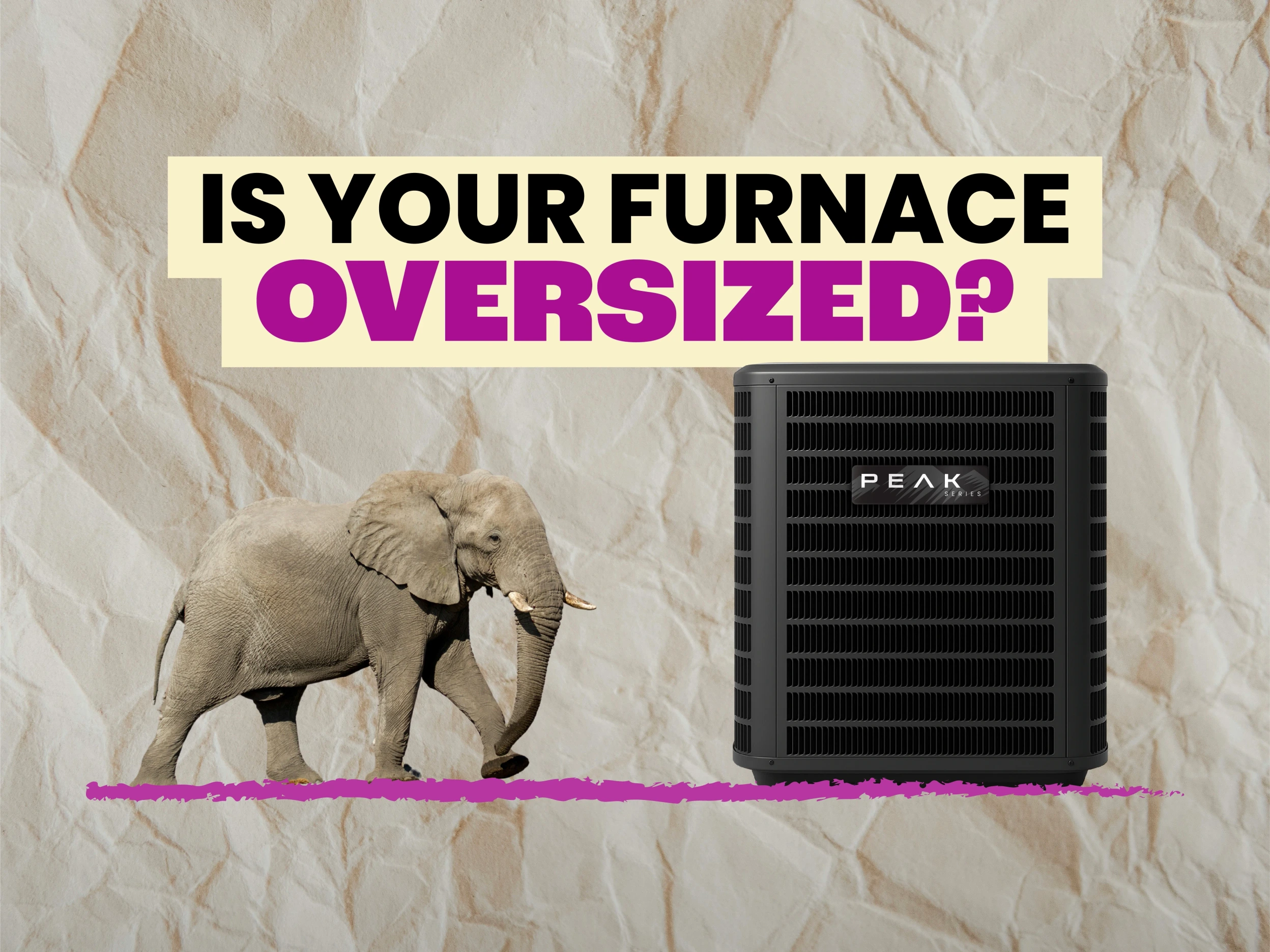In the chilling winter months, it often feels like your furnace is the one thing keeping you sane. So, when it comes time to purchase a new furnace, you want to ensure you get the right one. However, the moment you surf the web, you come across a plethora of confusing numbers and terms, instead of the straightforward answer you were expecting. If you wish there were one website that could tell you everything in simple terms, then the Peak Homeowners’ Guide is the right page!
Topics Covered:
- What are BTUs?
- What Does “Ton” Mean in a Furnace?
- Why Choosing the Right Furnace Size Matters
- Furnace Size by Square Footage
- Furnace Size by Climate Zone
- Other Factors That Determine Furnace Size
- How Do You Determine the Perfect Furnace Size for Your Home?
- Other Things to Consider When Purchasing a Furnace
- What is an AFUE? (Furnace Efficiency)
- Furnace Warranties
- Furnace Orientation
- The Verdict
Unlike your morning coffee order, furnace sizes unfortunately don’t come in large, medium, and small. Furnace sizing has more to do with its heating power than the size of its physical frame, and its heating power is measured in British Thermal Units, or BTUs.
What are BTUs?
A BTU or a British Thermal Unit is the unit by which the output of a furnace is measured, meaning a furnace’s BTU measures its ability to heat. An 80,000 BTU furnace, for example, can create more heat than a 40,000 BTU furnace. As confusing as it may seem, though, the BTU is just one of the two units used to measure a furnace’s size; it’s also often measured in tons.
What Does “Ton” Mean in a Furnace?
Surprisingly enough, it does not measure the furnace’s weight. Instead, it’s another unit of heating capacity. In the same way that distance can be measured in miles or kilometers, a furnace’s heating capacity can be measured in BTUs or tonnage. One ton equals 12,000 BTUs, so, for example, a 24,000 BTU furnace is a 2-ton unit. Here is a further breakdown of that formula:
1 ton : 12,000 BTU
2 ton : 24,000 BTU
3 ton : 36,000 BTU
4 ton : 48,000 BTU
5 ton : 60,000 BTU
Fun fact: The reason it's called a “ton” even though it’s not related to the furnace’s weight is that that’s the heating capacity a furnace needs to have to melt one ton of ice in 24 hours. So a 1-ton furnace can melt 1 ton of ice in 24 hours, and a 2-ton furnace can melt two! This information isn’t one you need to remember, but it’s a fun one you might like to know.
Why Choosing the Right Furnace Size Matters
In the same way that a laptop or PC needs to have the right fan size for best performance, your furnace needs to be the right size for your home to ensure optimal comfort. A furnace that’s too small won’t be able to adequately heat your home, rack up a higher-than-necessary energy bill, and break down quickly as it’s working harder than it’s designed to. A furnace that’s too big will heat your house very quickly and thus run in very short cycles, causing uneven heating throughout your house and a higher energy usage because of the constant switching on and off. So, how do you determine the right furnace size for your home?
Furnace Size by Square Footage
The main determinant of how big your furnace needs to be is how big your home is. The more space you have in your home, the more space needs to be heated. The table below shows just how much heating power is needed for a home of each size.
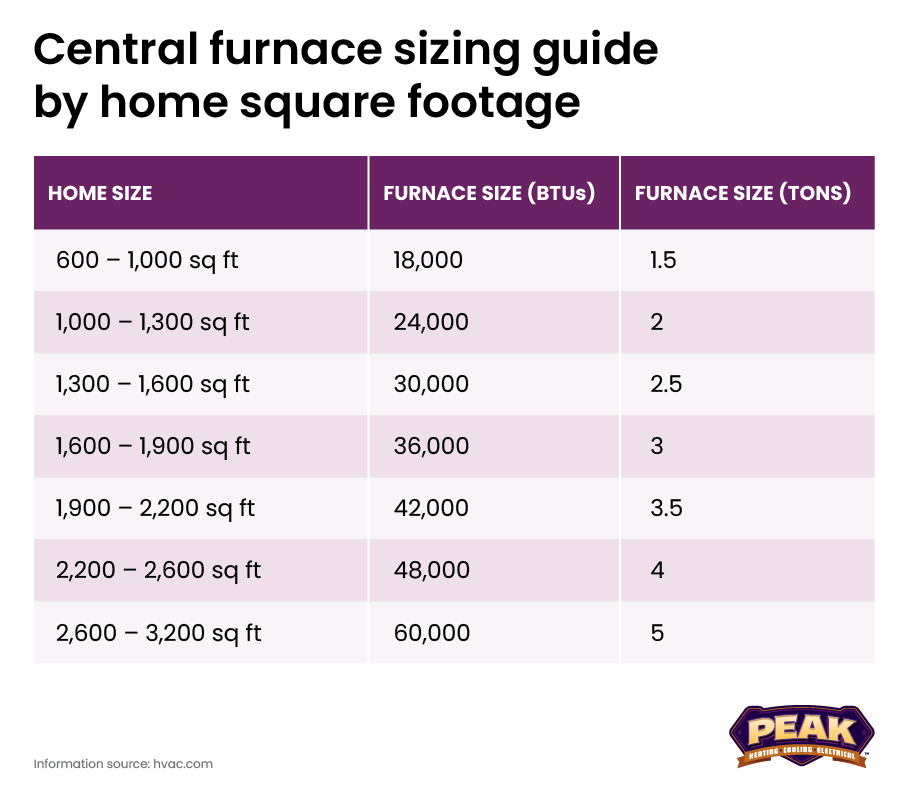
600 – 1,000 sq ft: 18,000 BTU or 1.5 tons
1,000 – 1,300 sq ft: 24,000 BTU or 2 tons
1,300 – 1,600 sq ft: 30,000 BTU or 2.5 tons
1,600 – 1,900 sq ft: 36,000 BTU or 3 tons
1,900 – 2,200 sq ft: 42,000 BTU or 3.5 tons
2,200 – 2,600 sq ft: 48,000 BTU or 4 tons
2,600 – 3,200 sq ft: 60,000 BTU or 5 tons
Furnace Size by Climate Zone
Another determining factor of the furnace size you need is the climate where you live. Naturally, a home in a cooler climate will need a more powerful furnace than a home in a warmer climate. We’ve included a helpful diagram to help you determine which climate zone you fall into and what furnace size each climate zone calls for.
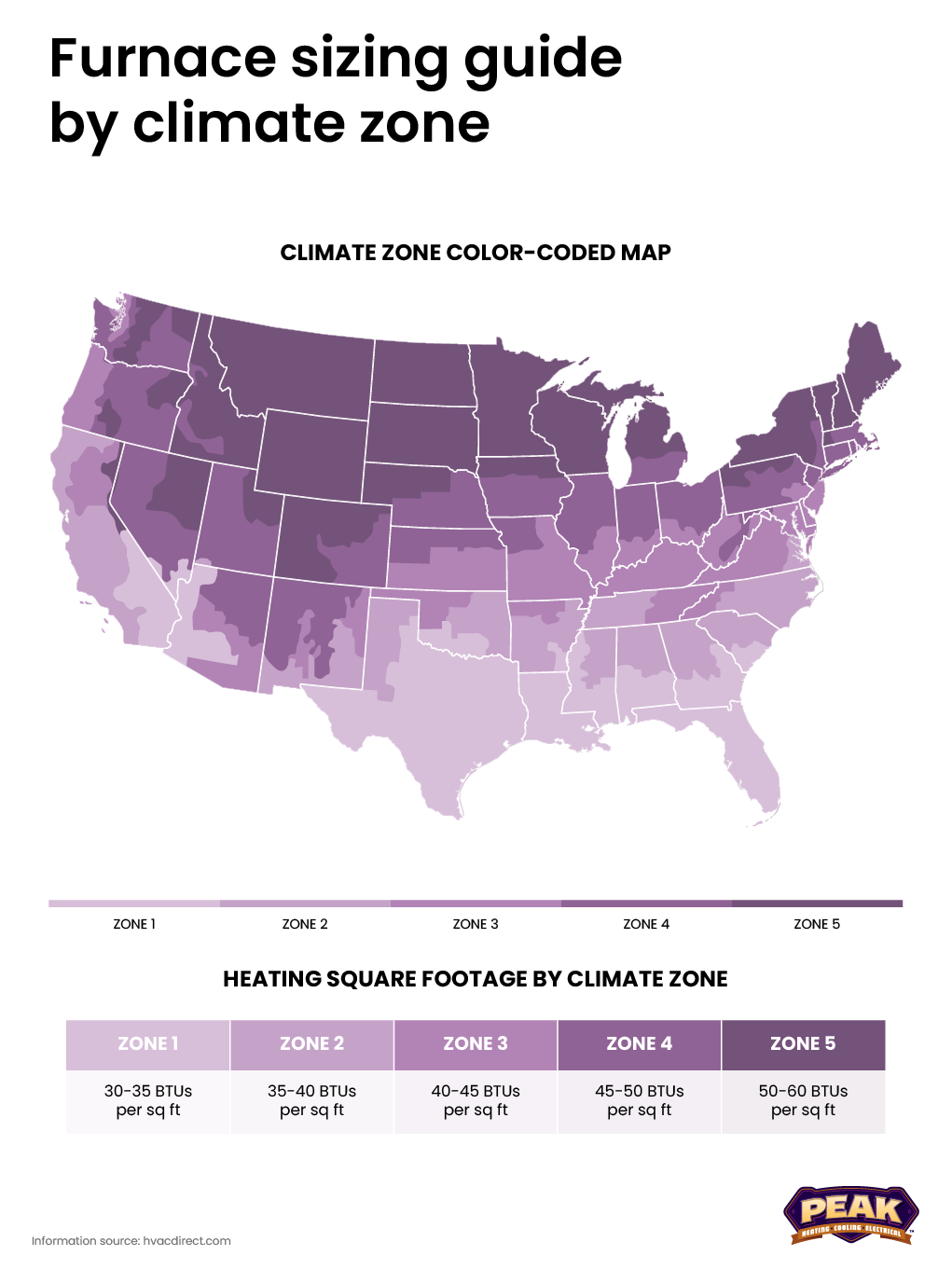
The southernmost regions of the US fall into Zone 1; these are the warmest states. The scale goes all the way up to Zone 5, the coldest states. So furnaces in Zone 1 require the least heating power while furnaces in Zone 5 require the most heating power. That being said, here is a breakdown of just how many BTUs per square foot are needed to heat a home in each zone:
Zone 1: 30 - 35 BTUs per square foot
Zone 2: 35 - 40 BTUs per square foot
Zone 3: 40 - 45 BTUs per square foot
Zone 4: 45 - 50 BTUs per square foot
Zone 5: 50 - 60 BTUs per square foot
Other Factors That Determine Furnace Size
Aside from the size of your home and the climate it’s in, other factors come into play when deciding on a furnace size. These factors include:
Sun exposure: A house with lots of sunshine will naturally be warmer, requiring a less powerful furnace.
House material: A house built with drywall rooms will allow for more heat transfer than a house built with brick rooms.
Number of rooms: Houses with open concepts will need less heating than houses with lots of segmented rooms.
Size of windows: Big windows often result in a colder home during the winter months.
How Do You Determine the Perfect Furnace Size for Your Home?
Now that you know what a BTU means and what factors determine furnace sizing, you’re probably wondering, “So how do I take all of this and count the exact furnace size I need?”
Well, you can get a close estimate by using the climate zone diagram above, but unfortunately, to get an exact number, an HVAC professional would need to perform a Manual J in your home. Peak Heating and Cooling offers Manual Js for free when you request a furnace estimate.
Other Things to Consider When Purchasing a Furnace
Furnace size isn’t the only thing that matters when it comes to purchasing a furnace. There are a few other non-sizing related features that determine how suitable a furnace is for your home. Among these are furnace efficiency, warranties, and appliance orientation.
What is an AFUE? (Furnace Efficiency)
The value of an HVAC system doesn’t come just from its upfront costs; in the long run, the electrical costs it takes to run the furnace are something you may want to consider as well. How high or low your electrical bill will be depends on a furnace’s AFUE, or annual fuel utilization efficiency.
According to the US Department of Energy, AFUE is a measure of how efficient the furnace is in converting the energy from fuel to heat over a year. An AFUE of 95%, for example, means that 95% of the energy in the fuel becomes heat for the home and the other 5% escapes outdoors or elsewhere. So the higher an AFUE a furnace has, the more efficient it is, and the less electricity will be wasted on lost heat.
Furnace Warranties
When purchasing a big-ticket item such as a furnace, you would want to make sure you are covered for many years ahead. The typical HVAC warranty covers parts and labor for 1 - 5 years and continues to cover just the parts for 5 years after that (10 years) at most. Peak Heating and Cooling offers an industry-leading 15-year parts and labor warranty for furnaces, giving you peace of mind for the next 15 years.
Furnace Orientation
Furnaces can sometimes be installed either upwards, sideways, or both. Depending on the amount of space available in your home, this may be something you want to consider. Rest assured, when a professional comes to your home to do a Manual J, this will be something they take into account.
The Verdict
Doing research before purchasing something as big and important as your home’s heating system is a very wise thing to do. The climate zone diagram included above is a great way to estimate the furnace size you may need for your home, but taking into account factors such as the number of rooms, sun exposure, and window size, there is no better way to get an accurate estimate than to contact a professional for a Manual J. To get a free estimate and Manual J done for your home, book here with Peak Heating and Cooling.














